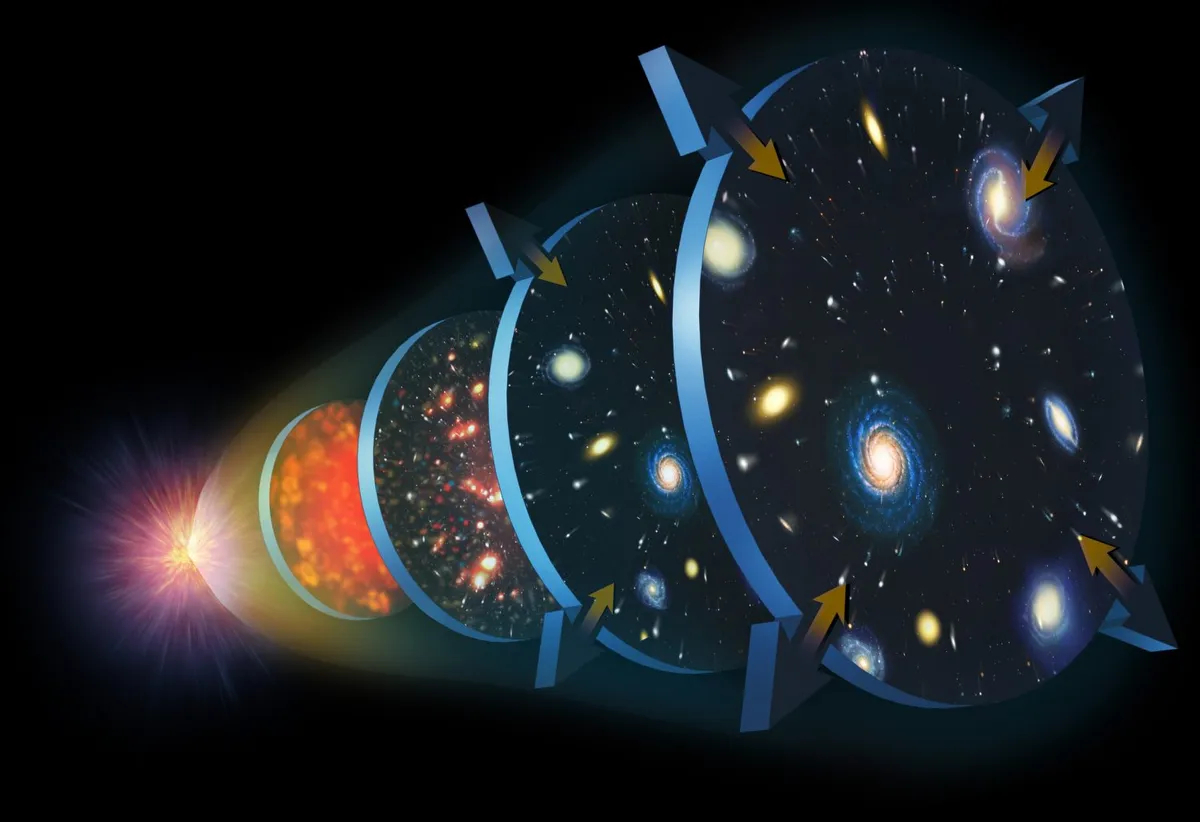Hubble Tension

- 15 Apr 2024
Why is it in the News?
One of the biggest mysteries in cosmology is the ‘Hubble tension’, the puzzle that the expansion of the Universe we see today doesn’t match what we think it should be from looking at the early cosmos.
What is Hubble Tension?
- The Hubble tension refers to a puzzling disagreement between two methods of measuring the universe's expansion rate, represented by the Hubble constant (H0).
- The Hubble constant describes how fast galaxies move away from each other due to cosmic expansion.
- Researchers employ two primary approaches to estimate H0: the cosmic distance ladder and analysis of the cosmic microwave background (CMB).
Cosmic Microwave Background (CMB):
- CMB constitutes a ubiquitous sea of photons, remnants of the Big Bang's aftermath.
- Scientists scrutinize CMB for temperature variations and employ intricate trigonometric techniques to analyze its large-scale properties.
- This analysis culminates in an estimation of cosmic expansion at approximately 68 (km/s)/Mpc.
Cosmic Distance Ladder:
- This method facilitates the measurement of distances to celestial objects spanning various proximity ranges.
- Notably, Cepheid variable stars, which exhibit predictable luminosity fluctuations over time, serve as crucial distance indicators.
- By gauging the brightness of Cepheid variables, researchers can infer their distances, leading to an estimation of H0 around 73 (km/s)/Mpc.
Discrepancy and Hubble Tension:
- The utilization of these two distinct measurement methods yields slightly divergent values for H0, resulting in the emergence of the Hubble tension.
Significance of the Hubble Tension:
- The presence of the Hubble tension suggests potential implications, including unexplored physical phenomena or systematic errors in measurement techniques.
- Resolving this tension is imperative to enhance our comprehension of the universe's expansion dynamics and the fundamental laws governing it.
CSIR-CCMB Study to Understand the Genetics Behind Diseases (The Hindu)

- 13 Oct 2023
Why in the News?
The project — “Diverse Epigenetic Epidemiology Partnership (DEEP)” — aims to uncover the effects of genomic and environmental diversity on disease risk observed in people across the world, including those in Asia, Africa and North and South America.
About the Project, The Diverse Epigenetic Epidemiology Partnership (DEEP):
- The Diverse Epigenetic Epidemiology Partnership (DEEP) is a pioneering genomics and epigenomics initiative aimed at unravelling the genetic underpinnings of Non-Communicable Diseases (NCDs) in diverse populations, including South Asians.
- This five-year international project seeks to illuminate the impact of genomic and environmental diversity on disease risk across global populations, spanning Asia, Africa, and North and South America.
- Researchers will examine individuals from varied genetic and environmental backgrounds, analyzing DNA methylation patterns to discern their contributions to disease risk within each context.
- The study involves the development of software, infrastructure, and advanced statistical analyses to create new resources, integrated with existing international health and genetics databases for assessing trends in DNA methylation variation.
- This initiative holds significance as it aims to identify common and region-specific disease-causing mechanisms, addressing questions about the universal effectiveness of medicines and paving the way for targeted interventions to reduce global health disparities.
What is DNA methylation?
- DNA methylation is a molecular process involving the attachment of chemical groups to DNA, influencing the activation and deactivation of genes.
- This epigenetic modification plays a crucial role in enabling the body to respond to environmental signals, thereby contributing to overall systemic health and disease status.
- The intricate interplay between DNA methylation, genetics, and the environment is essential for unravelling the pathways that underlie health and disease, providing insights into their interconnected consequences.
